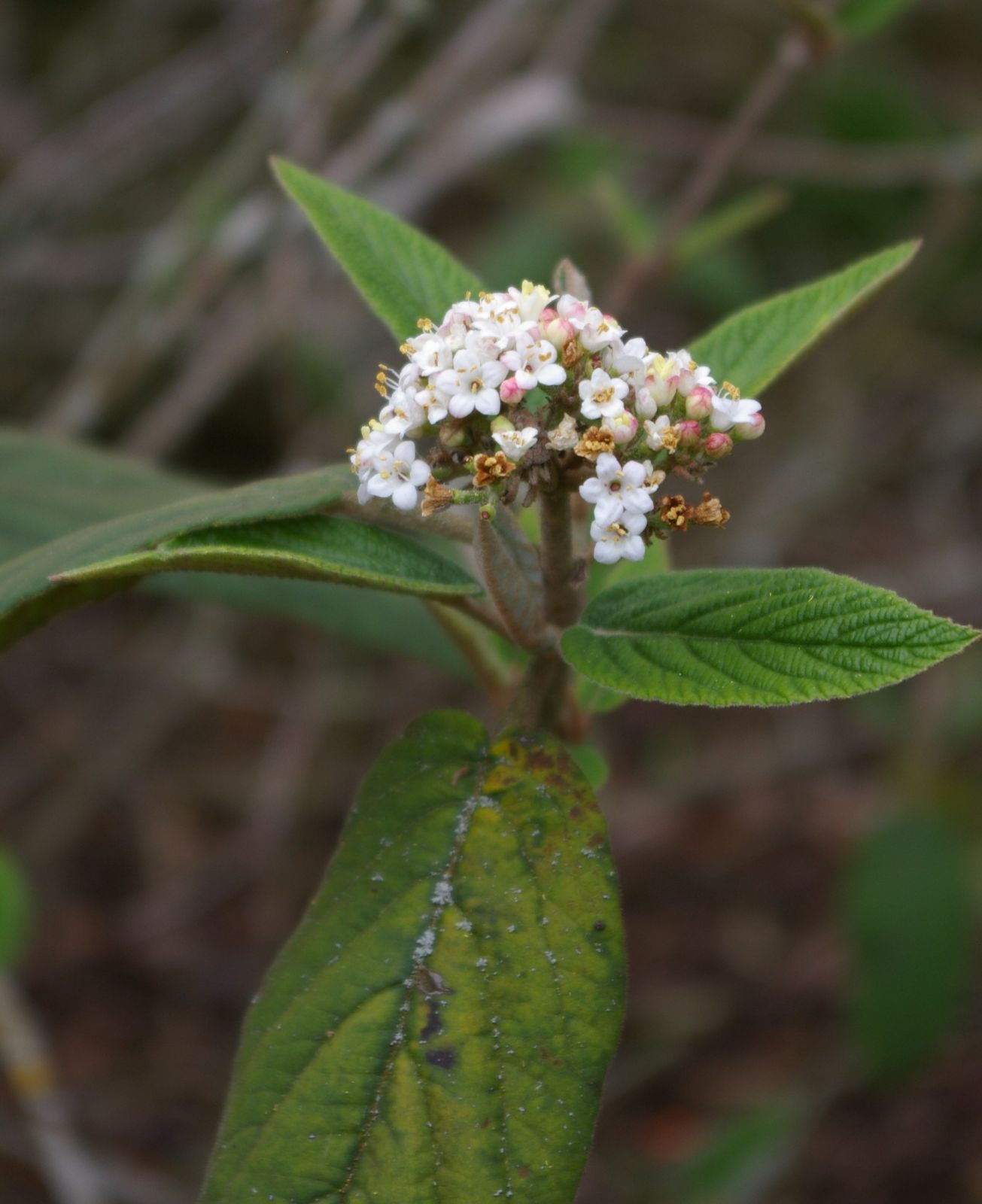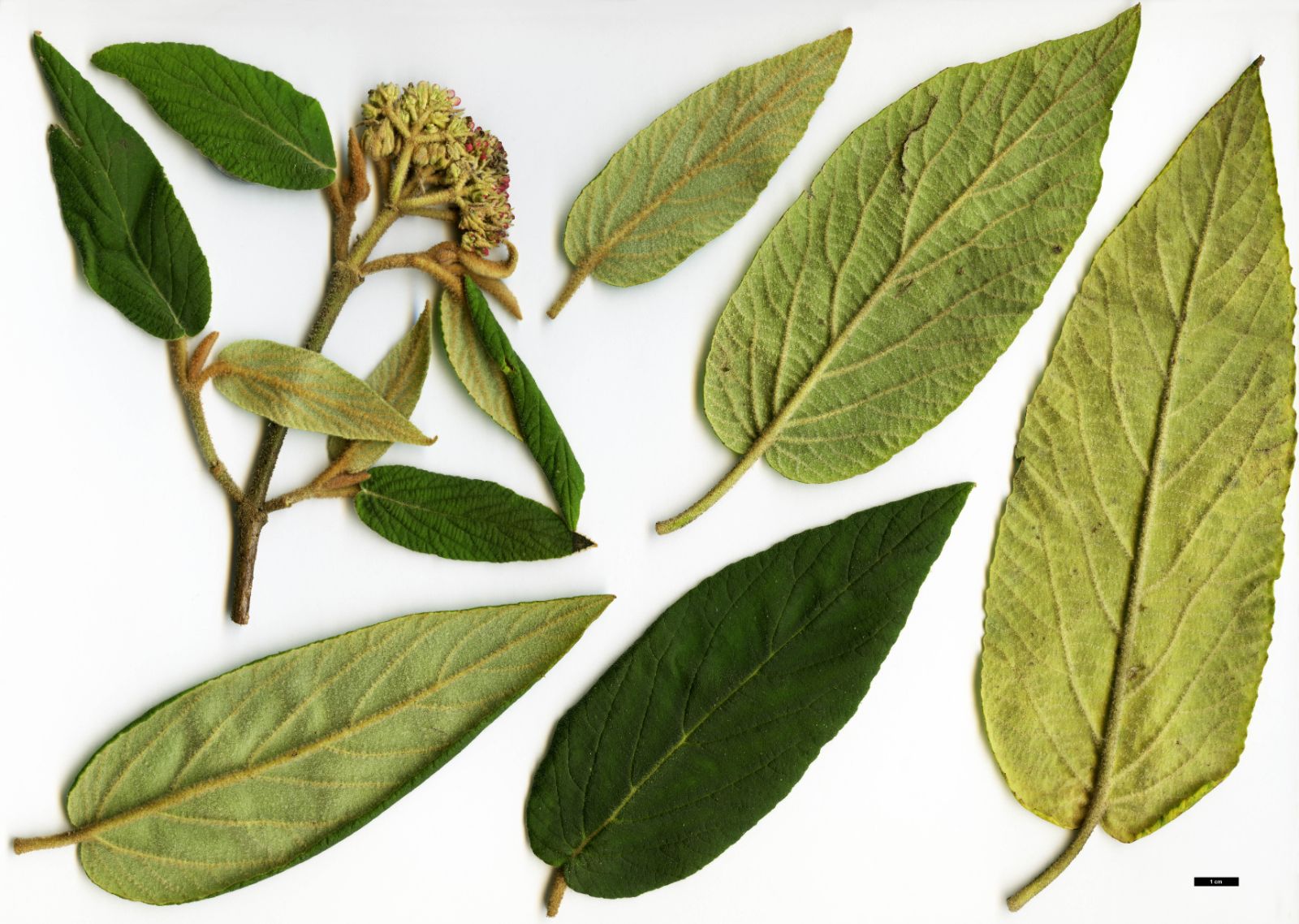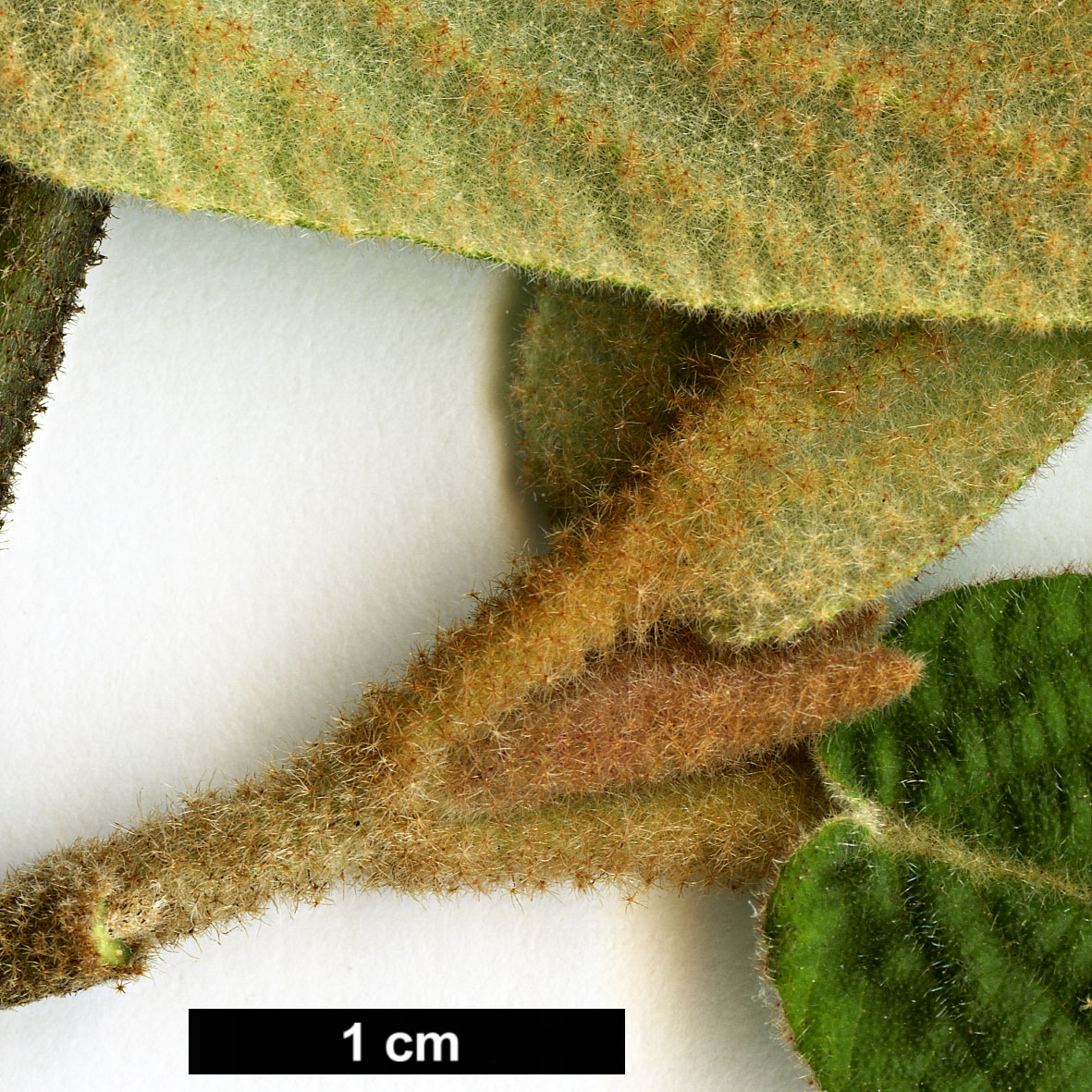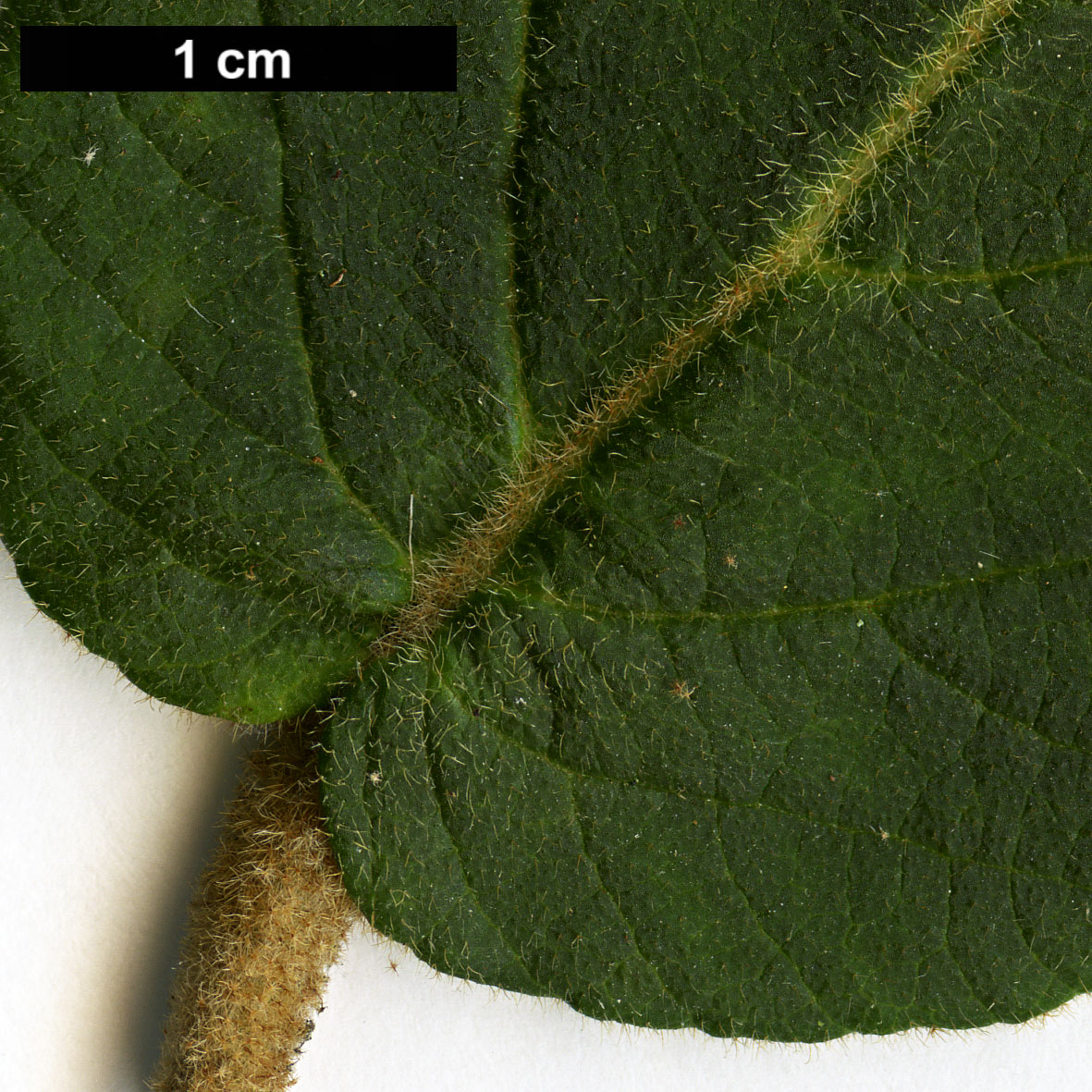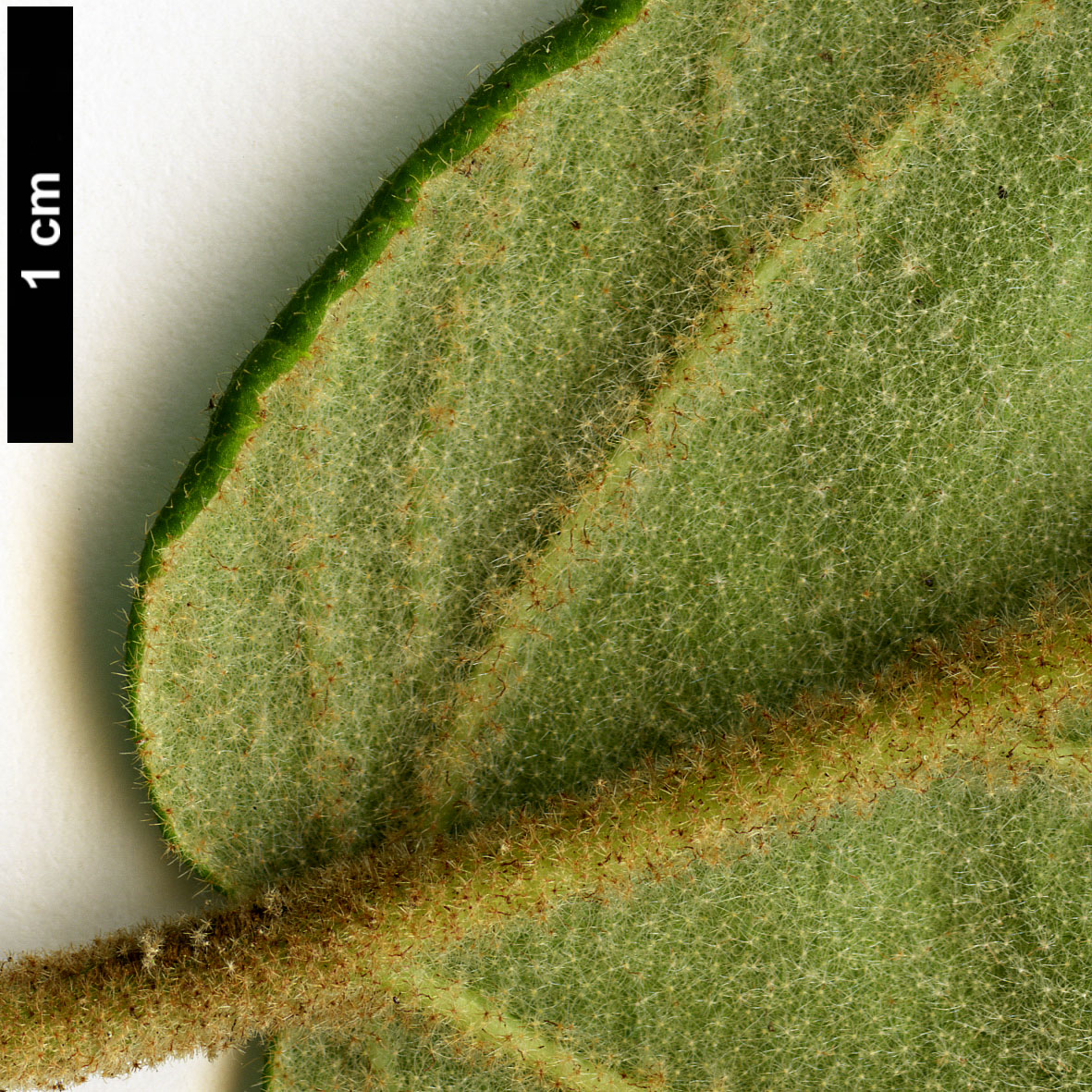Viburnum buddleifolium
Credits
Article from Bean's Trees and Shrubs Hardy in the British Isles
Recommended citation
'Viburnum buddleifolium' from the website Trees and Shrubs Online (treesandshrubsonline.
Genus
Other taxa in genus
- Viburnum acerifolium
- Viburnum betulifolium
- Viburnum × bodnantense
- Viburnum burejaeticum
- Viburnum × burkwoodii
- Viburnum × carlcephalum
- Viburnum carlesii
- Viburnum cassinoides
- Viburnum cotinifolium
- Viburnum cylindricum
- Viburnum davidii
- Viburnum dentatum
- Viburnum dilatatum
- Viburnum erosum
- Viburnum farreri
- Viburnum foetidum
- Viburnum grandiflorum
- Viburnum harryanum
- Viburnum henryi
- Viburnum hupehense
- Viburnum japonicum
- Viburnum kansuense
- Viburnum lantana
- Viburnum lantanoides
- Viburnum lentago
- Viburnum macrocephalum
- Viburnum molle
- Viburnum nudum
- Viburnum odoratissimum
- Viburnum opulus
- Viburnum phlebotrichum
- Viburnum plicatum
- Viburnum propinquum
- Viburnum prunifolium
- Viburnum rhytidophyllum
- Viburnum rigidum
- Viburnum rufidulum
- Viburnum schensianum
- Viburnum setigerum
- Viburnum sieboldii
- Viburnum suspensum
- Viburnum tinus
- Viburnum utile
- Viburnum veitchii
- Viburnum wilsonii
- Viburnum wrightii
A deciduous shrub about 6 ft high; the young shoots densely covered with pale, star-like down. Leaves oblong-lanceolate, 3 to 5 in. long, 1 to 2 in. wide, pointed, rounded or slightly heart-shaped at the base, shallowly toothed; upper surface furnished with simple or forked hairs, the lower one felted with pale, stellate down; stalk 1⁄4 to 1⁄2 in. long. Flowers white, funnel-shaped, 1⁄3 in. across, all perfect, produced on a short-stalked, numerously branched cyme, 3 in. across. Fruits oval, 1⁄3 in. long, black.
Native of Central China; discovered and introduced by Wilson in 1900. It belongs to the Lantana group, differing from V. lantana in its narrow, oblong leaves. It has no ornamental value.

